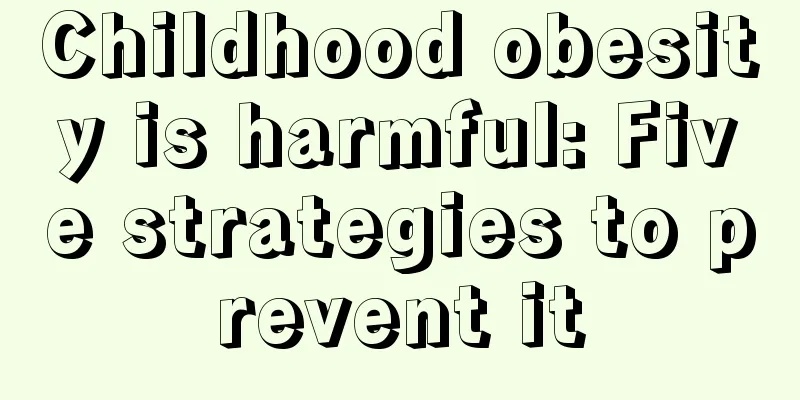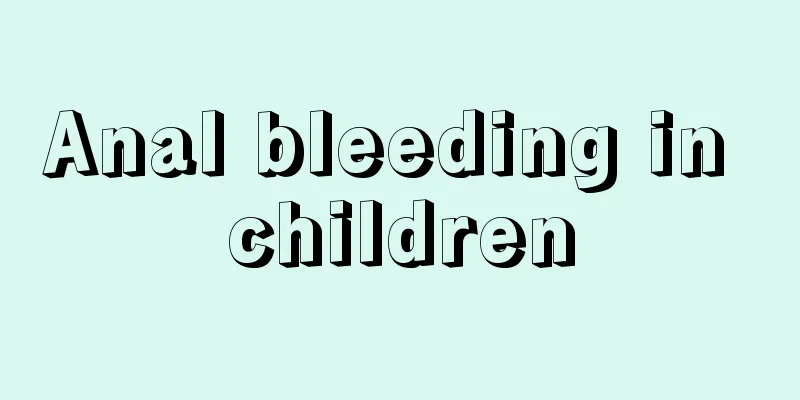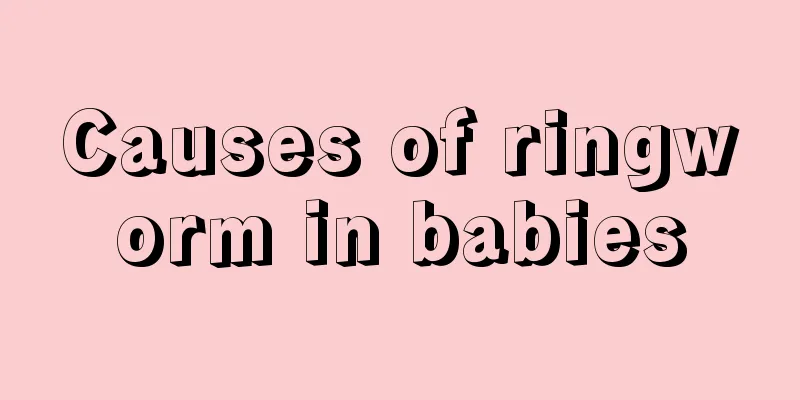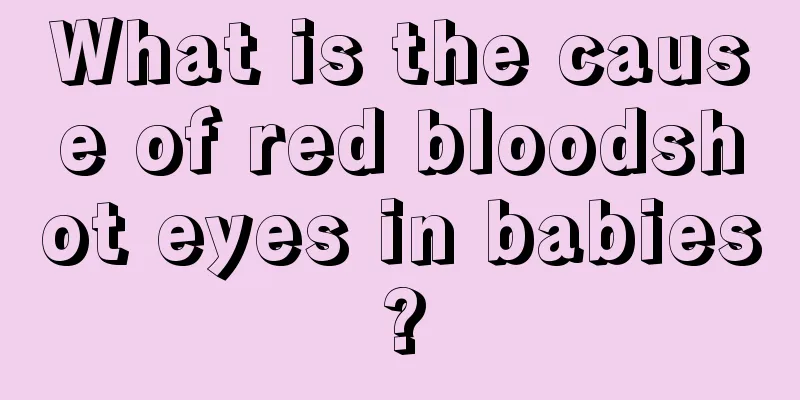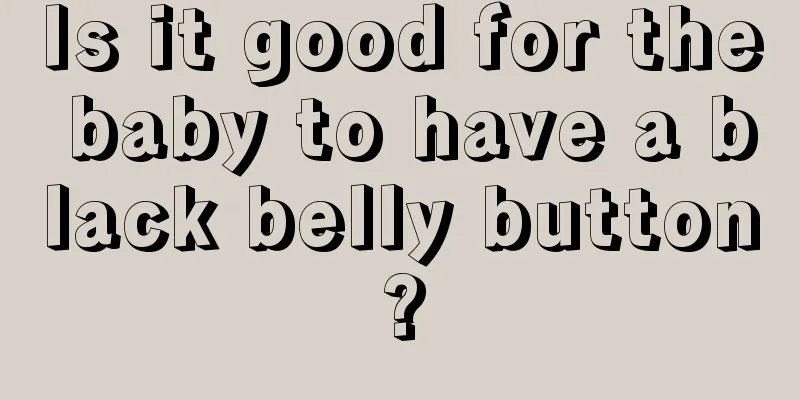What causes convulsions in children?
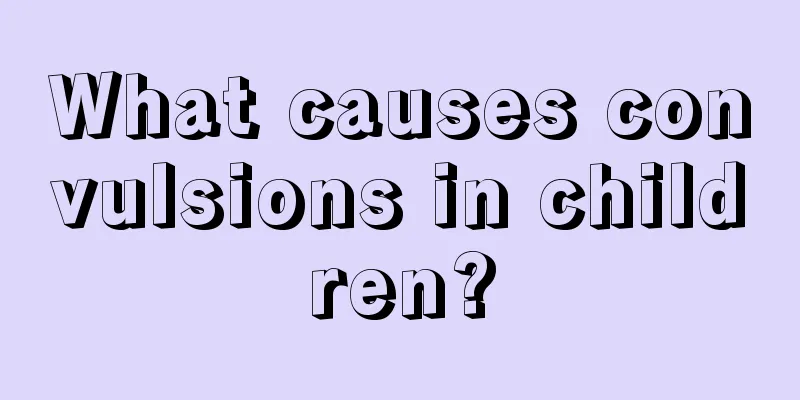
|
In life, many children will have symptoms of convulsions, but parents need to pay special attention to pediatric convulsions. Many diseases in life can cause convulsions, common ones include high fever, epilepsy, tetanus, etc. The following is a detailed introduction. 1. High fever Febrile convulsions account for the highest proportion. High fever is the most common cause of convulsions in children, no doubt about it. The pathological process of febrile convulsions is as follows: because the brain nerves of infants and young children are prone to uncontrolled "discharge", they are far less stable than the brain nerves of adults. The rapid rise in body temperature causes abnormal discharge of brain cells, resulting in sudden unconsciousness, stiff and twitching limbs, foaming at the mouth, drooping eyeballs, blue lips, etc. Febrile convulsions often occur within 24 hours of fever. Most of them are systemic convulsions with a short duration, usually around 15 minutes. Febrile convulsions are common in children aged six months to five years old. In Taiwan, the incidence rate among children under six years old is 3-4%. About 20-40% of children with febrile convulsions have a family history of febrile convulsions. Children with febrile convulsions usually have good energy after a short sleep after the convulsion, unlike those with meningitis, encephalitis or other problems who suffer from continuous drowsiness. 2. Epilepsy Epilepsy usually presents as recurring seizures with brief disturbances in consciousness and sensation. It is mainly caused by the incomplete development of the child's nervous system, which leads to excessive abnormal discharges of the cerebral cortex due to stimulation. When a child has a convulsion due to epilepsy, most of the children will become unconscious, with their eyes closed or half-open, their eyeballs rolled up, their teeth clenched, the corners of their mouth twitching, their head tilted back, their limbs flexing and extending repeatedly, their lips becoming cyanotic, and their bodies becoming rigid, which may last from a dozen seconds to several minutes. Epilepsy is a disease that runs in families. There are various causes of epilepsy in children and the clinical manifestations vary. First of all, we must find out the cause and determine the diagnosis. By choosing appropriate treatment and taking medication on time and in the prescribed dosage according to the doctor's instructions, the condition of most children can be controlled or cured. Causes of convulsions in children 3. Tetanus The cause of tetanus is a specific infection following trauma. Neonatal tetanus is often caused by inadequate disinfection of the umbilical cord. The typical symptoms of tetanus are paroxysmal severe spasms based on tonic muscle contraction (muscle rigidity and stiffness). Usually the first muscle group affected is the chewing muscles, followed by the facial expression muscles, neck, back, abdomen, limb muscles, and finally the diaphragm. The above-mentioned attacks can be triggered by slight stimulation, such as light, sound, touch, drinking water, etc. |
<<: What to do if your child has ADHD?
>>: What should children eat to supplement zinc? Recommended foods for zinc supplementation
Recommend
What are some tips for baby’s stuffy nose?
Are there any tips for baby’s stuffy nose? In mot...
Symptoms of spleen deficiency in nine-month-old babies
Nine-month-old babies are relatively young and ve...
Why does a child suck his lower lip?
Although some movements of babies seem very cute ...
6 month old baby schedule
Reasonable planning of your baby's daily sche...
The importance of fathers spending time with their children
Today's parents are busy with work every day,...
What to eat for infants and young children with zinc deficiency
During the development of a child, a very young c...
Symptoms and treatment of IGA nephropathy in children
The health of children is believed to be the most...
What causes children's poor memory?
If a child has a poor memory, parents will also w...
Is it good for children to bathe with mugwort water?
Children are easily bitten by mosquitoes in the h...
What to do if your baby's hands and feet are cold and sweaty
We know that since the organs of babies are not f...
Sleeping with a bottle in mouth will affect the growth of baby's teeth
1. Falling asleep with a bottle in mouth When sle...
What fruits should not be eaten by children when they have a fever?
Children have very low resistance, and if they ar...
What is tricuspid regurgitation in infants?
The heart is an important organ that maintains ou...
What are the symptoms of gastrospasm in children?
Gastric spasm in children is not a disease, it is...
What should I do if my child has poor resistance and often catches cold?
Children's resistance has always been a probl...




